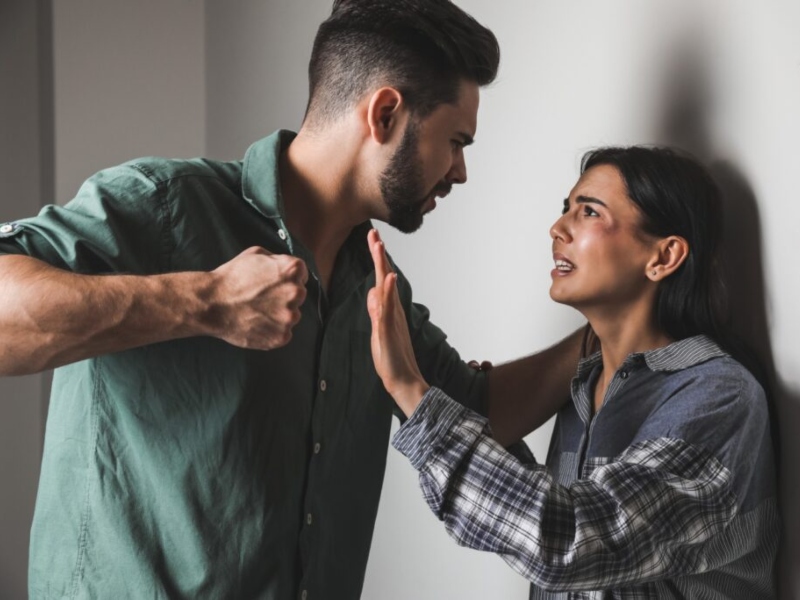The WH-LAIR Case Study below illustrates how civil legal aid supports federal efforts to serve the low-income and other vulnerable populations in various areas. It contain descriptions of common challenges faced by vulnerable populations, examples of federal responses to these challenges, and concrete examples of the ways in which civil legal aid meaningfully supports federal agencies’ efforts.
The Need
Nearly one in four American women have experienced domestic violence. On average, more than three women are murdered by their intimate partners in the United States every day. More than 15 million children in the United States live in families where partner violence has occurred, and seven million children live in families where severe partner violence has occurred.
Children who have been exposed to violence are more likely to require hospitalization or mental health services, and are more likely to be involved in the child welfare and juvenile justice systems. The health-related costs of intimate partner violence exceed $5.8 billion each year, nearly $4.1 billion of which is for direct medical and mental health care services.
Victims of intimate partner violence also lose a total of nearly 8 million days of paid work each year—the equivalent of more than 32,000 full-time jobs—and nearly 5.6 million days of household productivity as a result of the violence. These acts of violence compromise public safety, restrict the U.S. economy, and destroy American lives.
Examples Of The Federal Response
Because domestic violence has devastating effects on our society, many federal programs work to address the problems and challenges faced by victims through highly effective violence reduction and prevention strategies.
Since it was created in 1994 by the Violence Against Women Act (VAWA), the U.S. Department of Justice’s (DOJ) Office on Violence Against Women (OVW) has provided financial and technical assistance to communities nationwide to facilitate programs, policies, and practices to end domestic violence, dating violence, sexual assault, and stalking. On March 7, 2013, President Barack Obama signed its reauthorization, which secured and enhanced its protections – including the landmark Safety for Indian Women provisions.
Thanks to this bipartisan agreement, thousands of women and men across the country who are victims of domestic violence, sexual assault, dating violence and stalking will be able to access resources they need in their communities to help heal from their trauma. In addition to the long-running Legal Assistance to Victims (LAV) program, the law also authorizes other OVW grantees to use appropriated funds for civil legal assistance, including grantees and subgrantees of the STOP Violence Against Women Formula Grant Program and the Rural Program.
In FY 2012, the DOJ Office for Victims of Crime (OVC) funded the Wraparound Victim Legal Assistance Network Demonstration Project to develop holistic models for wraparound legal assistance networks that offer – at no charge – the wide range of legal assistance that victims need in the wake of their victimization. Legal services include civil legal assistance, representation in the enforcement of victims’ rights in criminal proceedings, immigration assistance for victims of human trafficking and battered immigrant women, administrative legal assistance, and assistance to victims of financial fraud and identity theft.
OVC selected six demonstration sites to develop models that can be replicated by other jurisdictions in the future and a comprehensive, independent evaluation is being conducted through the DOJ National Institute of Justice.
The U.S. Department of Health and Human Services’ (HHS) Family and Youth Services Bureau (FYSB) administers numerous programs and activities authorized by the Family Violence Prevention and Services Act, since 1984 the primary federal funding stream dedicated to the support of emergency shelter and related assistance for victims of domestic and dating violence and their children.
FYSB’s Family Violence Prevention and Services Formula Grants to States and Tribes support more than 1,600 shelters and 1,100 non-residential programs that provide services to domestic violence victims, including shelter, crisis counseling, and legal advocacy.
Legal Aid Helps
- Prevent future violence by obtaining, renewing and enforcing protective orders in court, providing resources to law enforcement and making perpetrators accountable through legal remedies, including incarceration.
- Secure or modify child custody orders so that a mother and her children can legally and safely leave the batterer.
- Counsel victims about safety and other legal concerns.
- Provide holistic legal services to break the links between victim and abuser, such as in matters related to separation and divorce proceedings, employment, immigration status, and financial and housing problems.
- Ensure that immigrant victims come forward and report crimes by seeking immigration relief such as U-visas or T-visas, specially designed visas for victims of crime such as domestic violence and trafficking.
- Resolve identify theft and other forms of financial exploitation perpetrated by abusers against survivors of domestic violence.
- Strengthen and stabilize families by mitigating needs for medical and mental health services, special education and counseling for affected children, and reduced workplace absences.
Lawyer helps prevent abuse and treat trauma
“Nazia,” a 37-year-old immigrant from Guyana, fled with her two young children from the physical and emotional abuse of her husband.
With the assistance of Queens Legal Services (QLS), a recipient of HHS FYSB funding, she successfully obtained an Order of Protection and full custody of her children. However, shortly thereafter, Nazia’s abuser retaliated by filing for a modification of custody, citing frivolous allegations of inappropriate parenting.
Her legal aid lawyer continued to represent her and also referred Nazia to a QLS social worker, who provided counseling to her and her children throughout the process. Again, thanks to her legal aid lawyer, after two years of litigation, Nazia settled the case and retained sole legal custody of her children.
Legal aid contains collegiate stalker
“Sharon’s” physically violent ex-boyfriend continued to stalk her after they broke up. Her next problem arose when he started showing up on their college campus every time she left the library, computer lab or came out of her classroom. He repeatedly drove by her home and harassed her with constant telephone calls.
Thinking that her only option was to drop out of school, Sharon sought help from LSC-funded West Tennessee Legal Services, which receives OVW LAV monies to help people like her.
She and her legal aid attorney documented the stalking behavior, and together met with her college Dean to discuss the problem and propose the distance her ex-boyfriend should maintain to keep Sharon safe. When her ex-boyfriend objected, Sharon’s attorney represented her in a court hearing, where the judge agreed with Sharon and issued a protective order with the specific distance she requested so she could continue her education.

